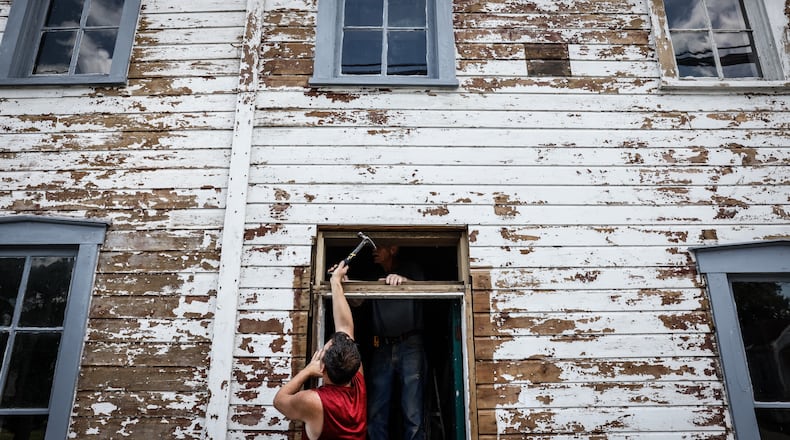The then-owner found a crew to shore up a collapsing wall at the timber construction structure at 216 E. Main St.
The building was sold that year to Steve and Sally Watson, owners of other downtown properties including the Roller Mill and the Hotel Gallery.
The Buggy Whip building was constructed in the late 1880s after a mill that stood on the site was destroyed in a fire. The building first was used to produce buggy whips for drivers of horse-drawn buggies, a major form of transportation at the time. It later was used as a blacksmith shop, a car dealership and an antiques business. The building, which included an apartment, had been vacant for some time.
The Watsons have worked with the city since late 2020 on a five-phase plan, which included a May 31, 2022, date for work to be complete,
The city worked with the Watsons as progress was being made, said Collin Carville, city planner.
“It has been a slow process, but we are finally seeing some reassuring progress. Our office spoke with Mr. Watson at least once a month for updates/progress,” Carville said.
City Manager Tim Eggleston said there are no complaints as Watson makes progress on the work.
Steve Watson said last week that their efforts have come a long way, but they are far from being able to use the building. Four of five work schedule categories that he termed “critical to ensure structural integrity and stabilization against further deterioration” are complete. The fifth phase of painting the building exterior is underway and not without its own challenges.
“The logical answer to why it’s taking so long is simply because there’s so much to do and I want it done right. The extent of the work involved is sizable due to the building’s age and condition. There were no real difficulties to overcome,” Steve Watson said.
The Watsons have no plans for the building.
“At this point I’m not too concerned about not knowing what the future holds. I believe that the answer to what the building should be used for will manifest itself when the time is right. When you take care of the present moment, the future tends to take care of itself as well,” he said.
Rob England, Miami County’s chief building official called in when the collapse occurred, said the structural work is done with progress being made on painting, trim and “housekeeping issues.”
“Luckily, this was an all-wood structure that could be repaired fairly quickly. If there would have been brick structural elements involved this could have been an entirely different story,” England said.
Watson, who didn’t disclose how much the repairs have cost, said despite the time involved, he would take on the building again.
“Yes, I most definitely would if the threat of the building being torn down still existed. If this building were in Europe no one would consider tearing it down,” he said.
“The downtown can’t afford to lose these ‘birthright giants,” Watson said of the Buggy Whip and Roller Mill building. “They represent the only two remaining canal-era industrial buildings left in Tipp City. They were actually powered by water harnessed from the canal lock-spillway design. Sounds like a good investment.”
Contact this contributing writer at nancykburr@aol.com
About the Author



